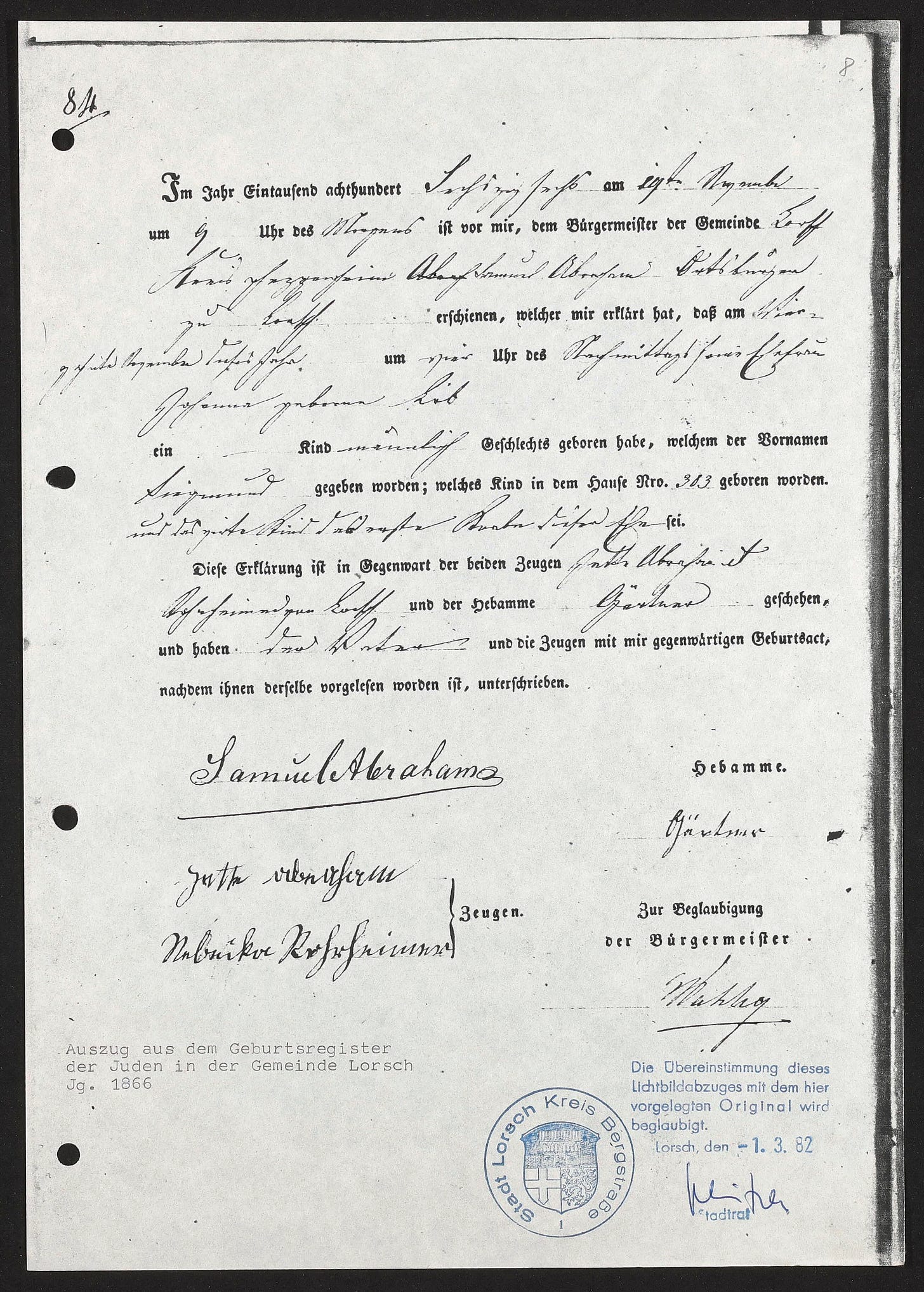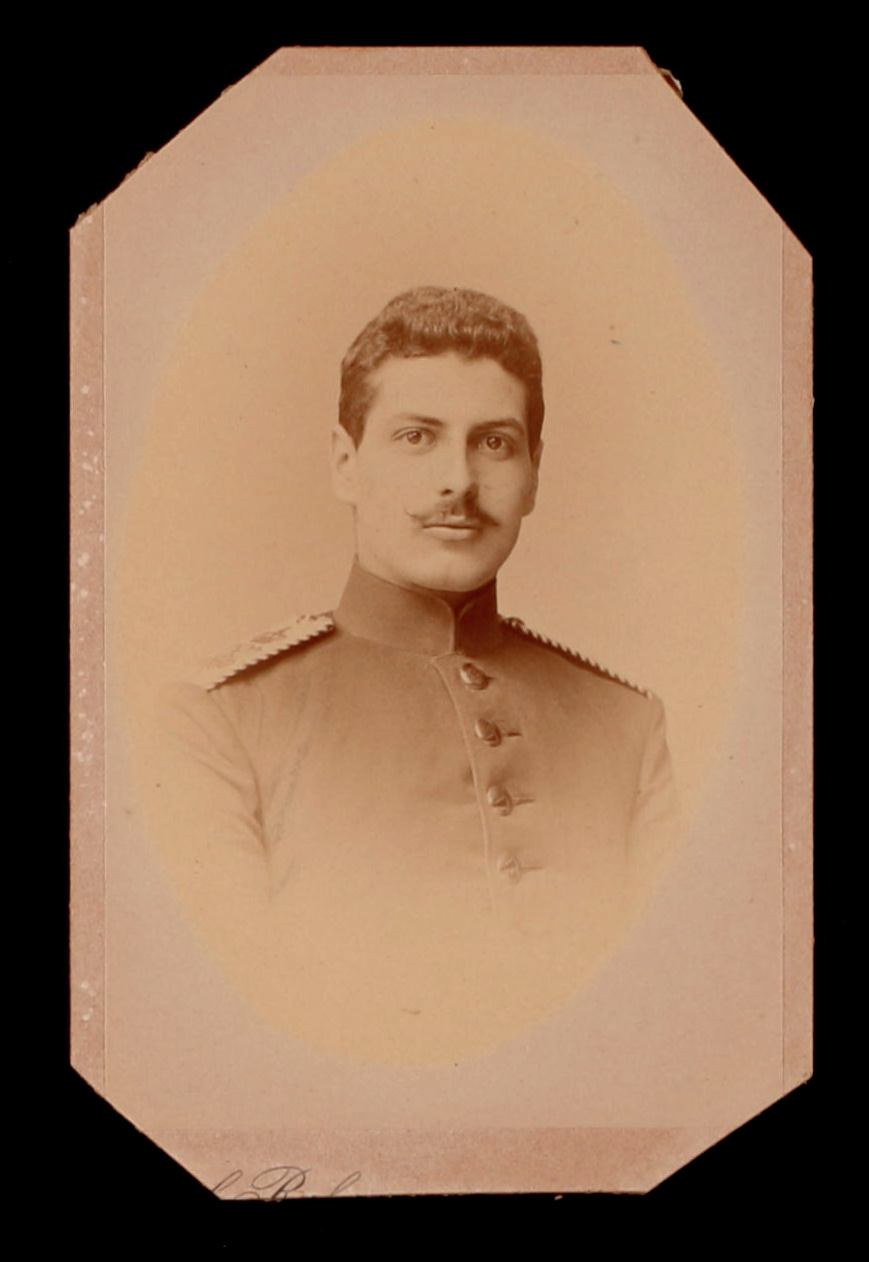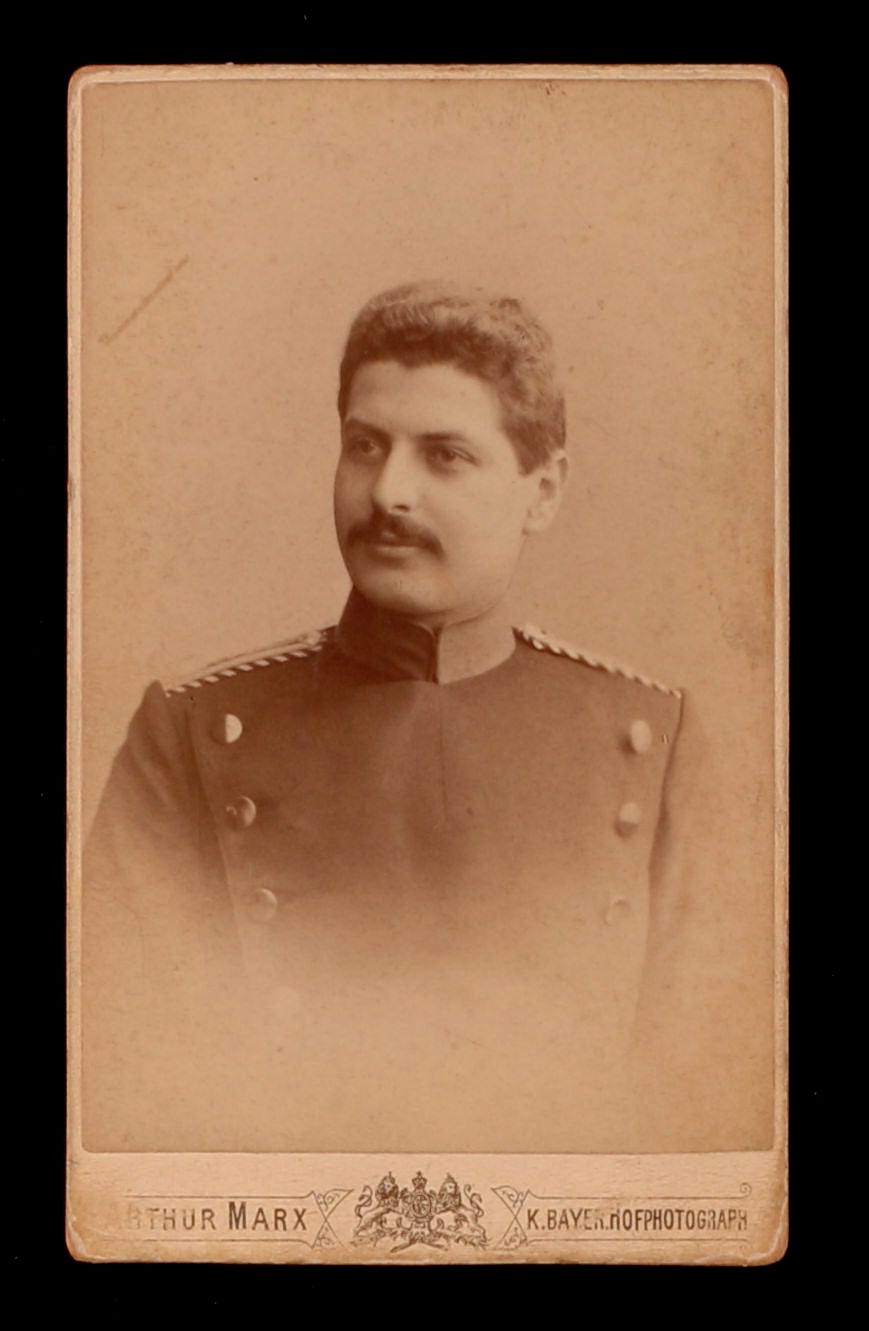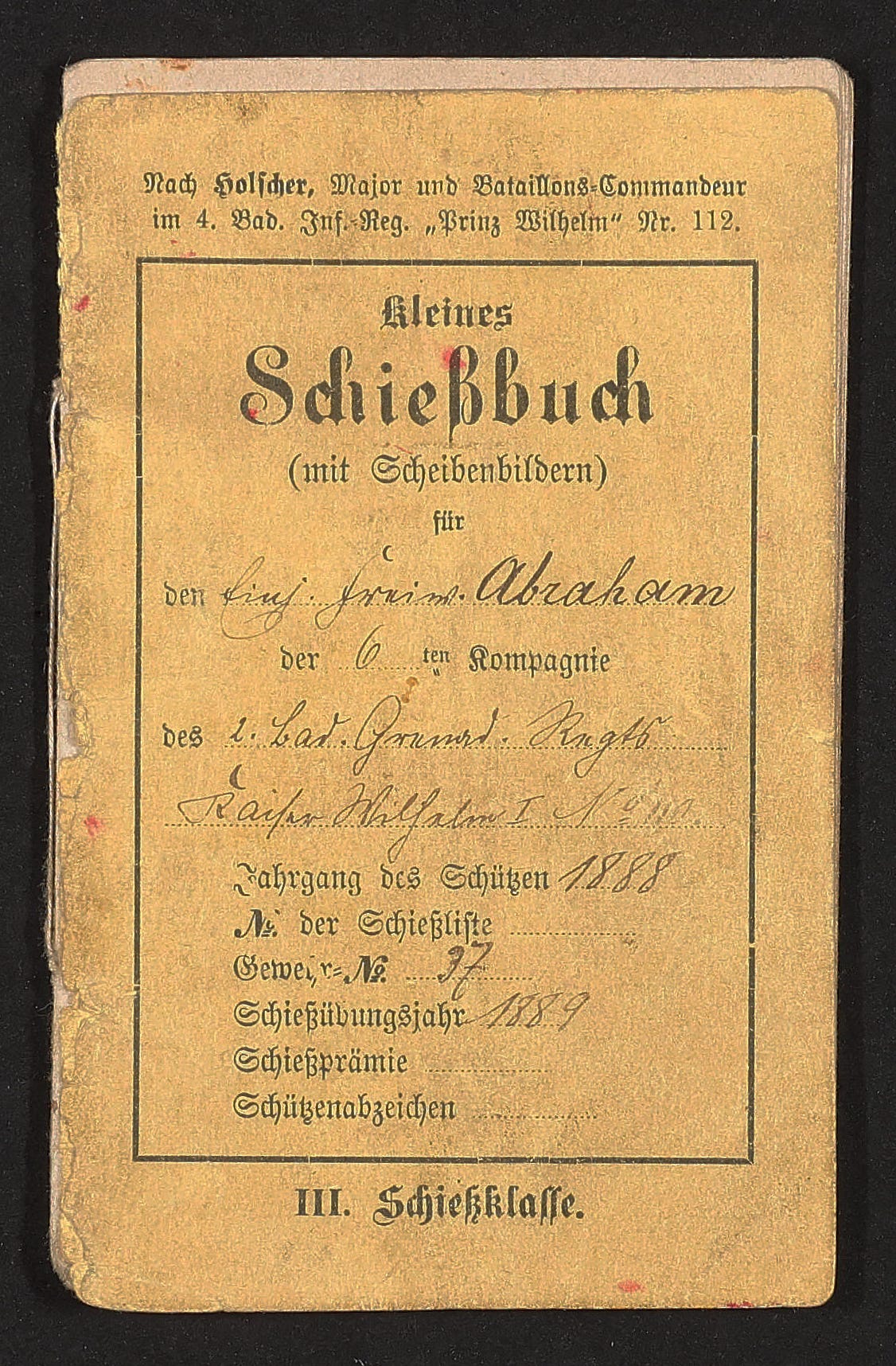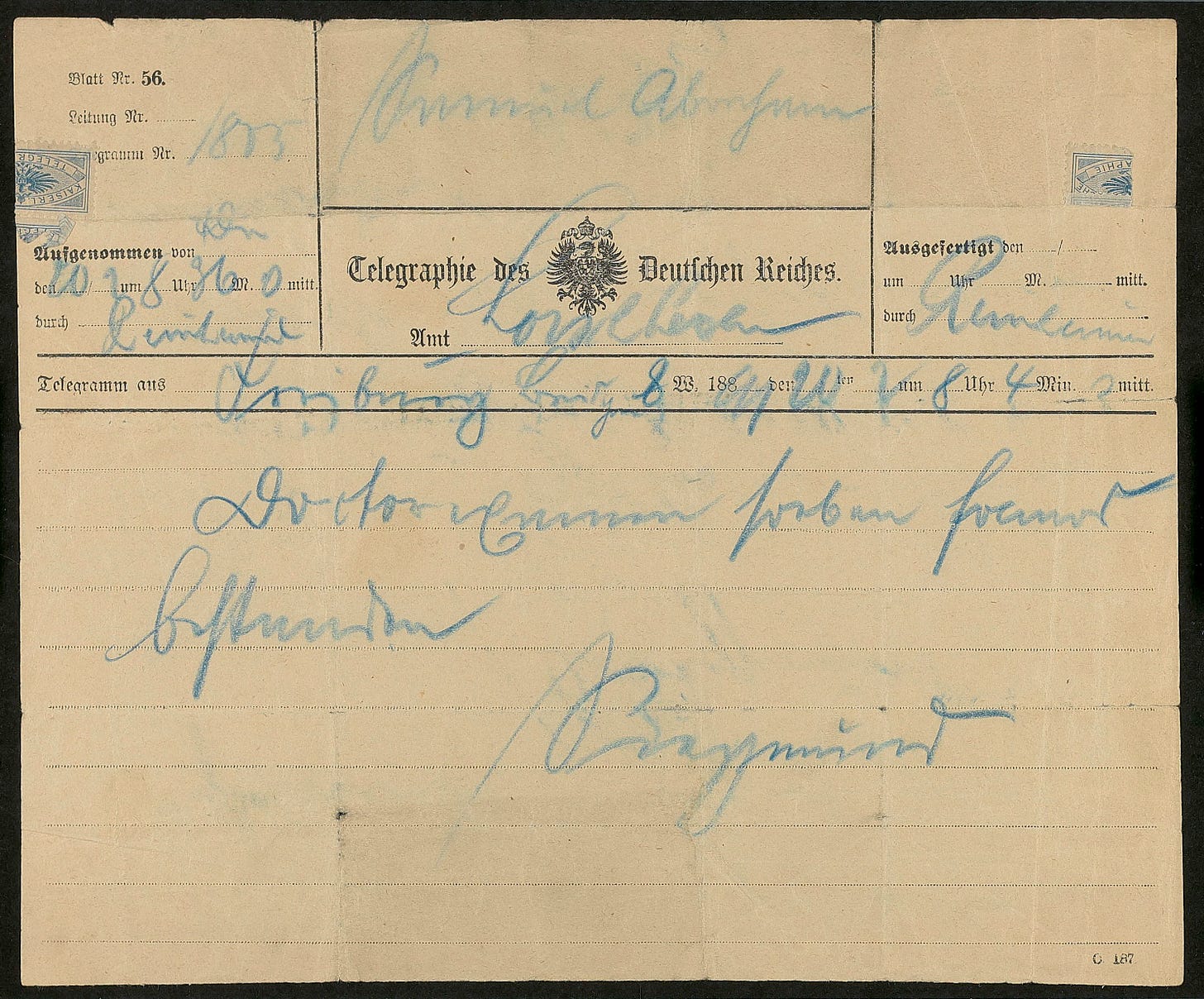Siegmund is Born
In posts 21 and 22 we explored the tragic history of Siegmund’s siblings and their families.
However, all of that was in the future and unknown at nine o’clock on the morning of Wednesday, the 14thNovember 1866, five years after the birth of their third daughter Fani. This was the moment of birth recorded by the mayor in an almost unreadable certificate at the time, of my great grandfather Siegmund Abraham.
The event must have brought great joy to his father and much family celebration to (finally?) have a son in the family. I appreciate this sentiment might jar these days but, just as the future of their children was not known to them, so it is not for us to impose modern values onto the events of the time.
Siegmund’s Secondary Education
The family seems to have been well off, and Siegmund received a good education. He attended the primary school at Lorsch, but there being no secondary school, he had to go to the nearby town of Bensheim. There he attended the importantly-named Grand Ducal Gymnasium. Bensheim, lying on the Bergstrasse, an old Roman road known for its beautiful landscape, was originally owned by the monastery at Lorsch, but had developed into a much greater place. There were no buses or carpools in those days so, Siegmund had a daily walk of about 4 miles (6 km) to school, and the same back again in the afternoon.
Medical Undergraduate Studies
At some point Siegmund decided he wanted to be a doctor. In accordance with German practice at the time, he took courses at several universities. But he also had to do his military service. His first stint was in 1885, and he joined the 2nd Baden Grenadier Regiment. It seems that his medical studies were entwined with his military service.
Siegmund started at the University of Heidelberg, receiving his matriculation on October 21, 1886; he studied medicine there for three years as an undergraduate. It must have been quite an eye-opener for this country boy to live in a great university town. I wonder what sort of digs he had and how often he travelled home. I also wonder how observant he was as a Jew, whether he involved himself in the local community or, as was often the case, was he starting to assimilate with the new-found freedoms that were evolving for Jews at that time.
Being Jewish did not seem to impede his progress: he was summoned for his preliminary examination in July 1888, receiving his final study certificate at the end of October 1889.
Volunteer Soldier
There is a remarkable piece of ephemera during this time 1888-1889. In addition to his medical studies, he also spent his time as a soldier. We have his shooting record from this same period. He seems to have been quite an accurate shot although he never had cause to do this on a battlefield. I’m not sure how he related this activity to his medical studies.
More studies
In November 1889 he moved to Berlin because only ten days later, he is recorded as being matriculated at the University in Berlin. He was only there until March 1890. During this time, he was an intern in gynaecology at the Charité Berlin University Hospital as well as being an intern at the University clinic. The Charité Hospital still functions today.
This time he took a couple of months off before matriculating at the University of Freiburg in May 1890. His dissertation, incomprehensible to me, was ‘On peculiar forms of amyloid degeneration and on a case of combination of chronic hepatitis with amyloid degeneration.’
Samuel Dies
Sadly, his father did not live to see his son successfully complete his medical studies. His final months were interrupted by a telegram from his parents on 13th April 1891 saying, ‘Come immediately!’ Siegmund rushed home to find his father unwell and dying. Two days later Samuel was dead.
A Doctor
One month later Siegmund’s doctorate was announced on 16 May 1891. His formal state examination at Freiburg took place on 15 June 1891 at the age of 24, and a month later Siegmund was awarded his license to practise medicine. The Doctor in the family had arrived but it must have been a bittersweet moment.
Following graduation, he enlisted again into the army as a volunteer doctor. On March 31, 1892, Siegmund received a certificate of good conduct as General Physician of the XI. Army Corps, regarding one-year volunteer service.
Formal Recognition
In July 1892 at the end of July 1892 he received a letter from the offices of the Prussian King Wilhelm II. The envelope was marked ‘On board the yacht Kaiseradler’, his Imperial Paddle Steamer at that time. Inside the letter was his Certificate of Appointment as Assistant Doctor, second class.
Siegmund opened a clinic in Hemsweg, in Frankfurt. His mother Johanna, now a widow of one year, joined him and became his housekeeper.
The first problem for Siegmund was how to build up his practice. Advertising was not allowed, and it was difficult as a 25-year old doctor to attract patients. What eventually helped him was misfortune of others.
Cholera Spreads Around the Globe
Cholera was a danger across the world, increasingly transmitted through the growing interconnection between countries and continents. In 1890, an outbreak of cholera started in the Ganges delta in Western Bengal, India. It spread Eastward to Korea and Japan and onward to China. The influx of Muslims to Mecca brought it West into Persia through to Egypt. From there, cholera arrived first in the port of Toulon in France and continued to spread in France from Italian immigrants, and thence into Spain. Quarantine of ships and strict control of immigrants kept it out of England at that time.
A year later there was another severe outbreak in Bengal when 60,000 Hindu pilgrims arrived at a small village to celebrate a bathing festival that the authorities couldn’t prevent. It spread northward into Afghanistan and thence into Russia and arrived in Moscow.
Around the same time the antisemitic Russian Imperial regime was expelling all Jews from Moscow. Coupled with the appalling conditions of life generally on top of famine that year and now a cholera pandemic, all the Jews that could, headed East to escape with the hope of journeying to America.
Cholera in Germany
These expelled and escaping Jews arrived in Hamburg from where they would board a ship to New York. Before embarking for their new life, the Jewish families were all housed in some barracks where the conditions compared to the ones from which they had just escaped. Badly handled by the shipping line and the city elders, cholera spread to the city population. It became the worst outbreak in Germany.
Other German cities responded with alarm. In Frankfurt, the authorities cordoned off the railway station and insisted that anyone arriving from Hamburg would undergo a medical examination. The authorities needed doctors, and I can understand the reluctance of those with established practices to come forward, not only because of the risk of their own infection. They had their own patients to worry about and didn’t need the additional burden this would involve.
Siegmund To the Rescue
Our Siegmund was not encumbered by such issues and threw himself into the work. He was possibly the only doctor to volunteer and may have been the only doctor there. A special examination area had been set up adjacent to the station. His prior military training and organisational skills would have stood him in good stead. The ensuing publicity generated by this event did him no harm, especially when mentioned by name in some of the reports.
Siegmund Joins a Lodge
In 1893, Siegmund joined a Jewish Lodge. Established only five years earlier, the B’nai B’rith Lodge XX accepted his membership in December of that year. All the members were active and worked for the benefit of the Jewish community of Frankfurt, involving themselves over time in and supporting a host of charitable institutions.
This shows his continued connection with his Jewish roots although he probably led an increasingly secular life within society. It is likely that joining the lodge was also part of his endeavour to widen and establish the reputation of his practice.
B'nai B'rith
B'nai B'rith is the oldest Jewish membership organization in the world. The order was founded 170 years ago by German-Jewish immigrants in New York. The lodge in Frankfurt was the twentieth established at that time in the world. B’nai B’rith continues to this day bringing people together, doing charitable works across society and communities around the world.
By this time Siegmund is 27 and it is time for him to get married and start a family of his own, more of which next time.
LIST OF NAMES: Please open Post number 18 to see all the people that are mentioned here and in previous posts.
____________________________________________________________________________
Attributes
Many of the documents and photographs here are, or at some time in the future will be, lodged as a family archive with the Jewish Museum in Berlin. Jüdisches Museum Berlin, Schenkung von Frau Anne Marx in liebevoller Erinnerung an ihren Mann Carl Theodore.





